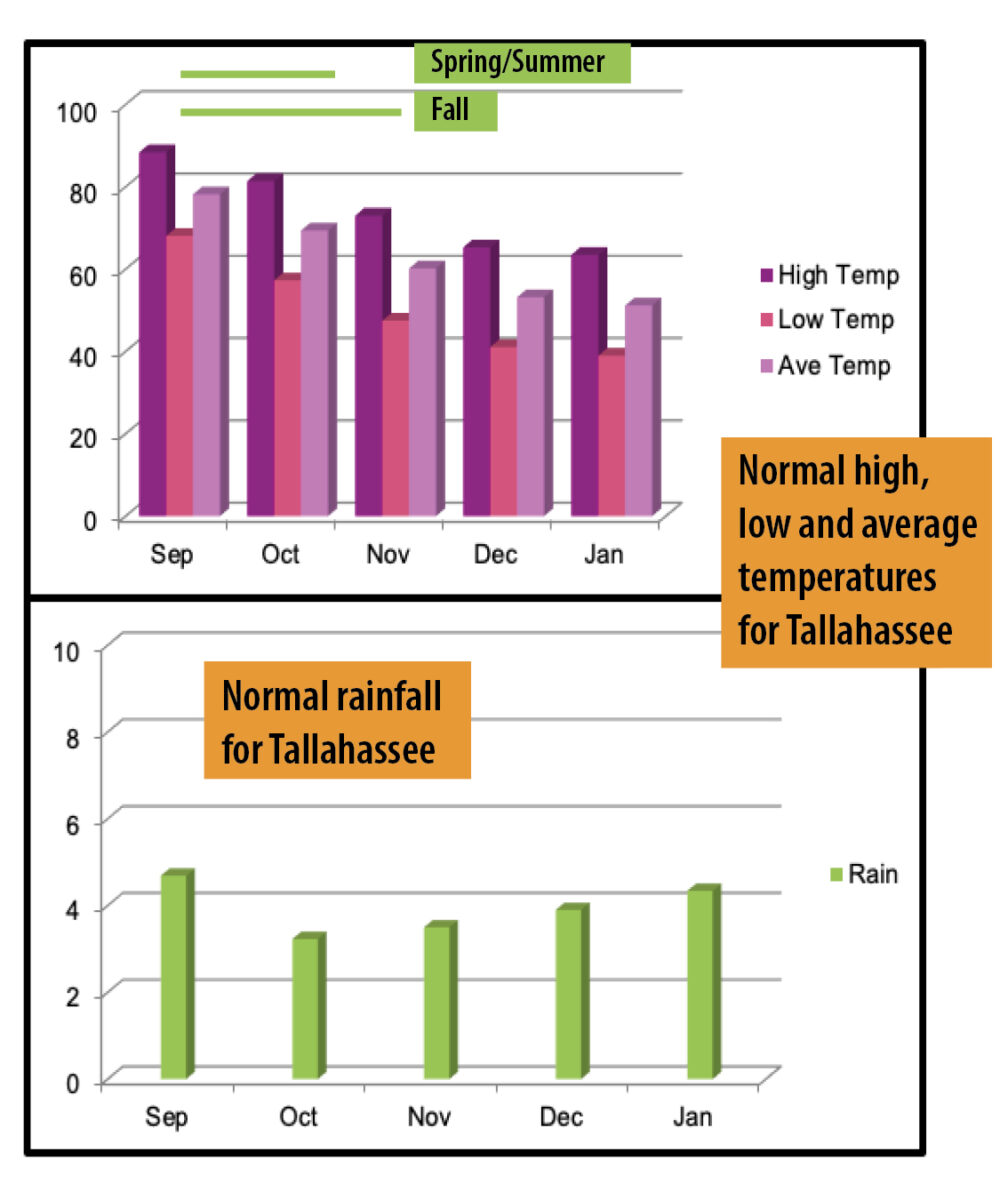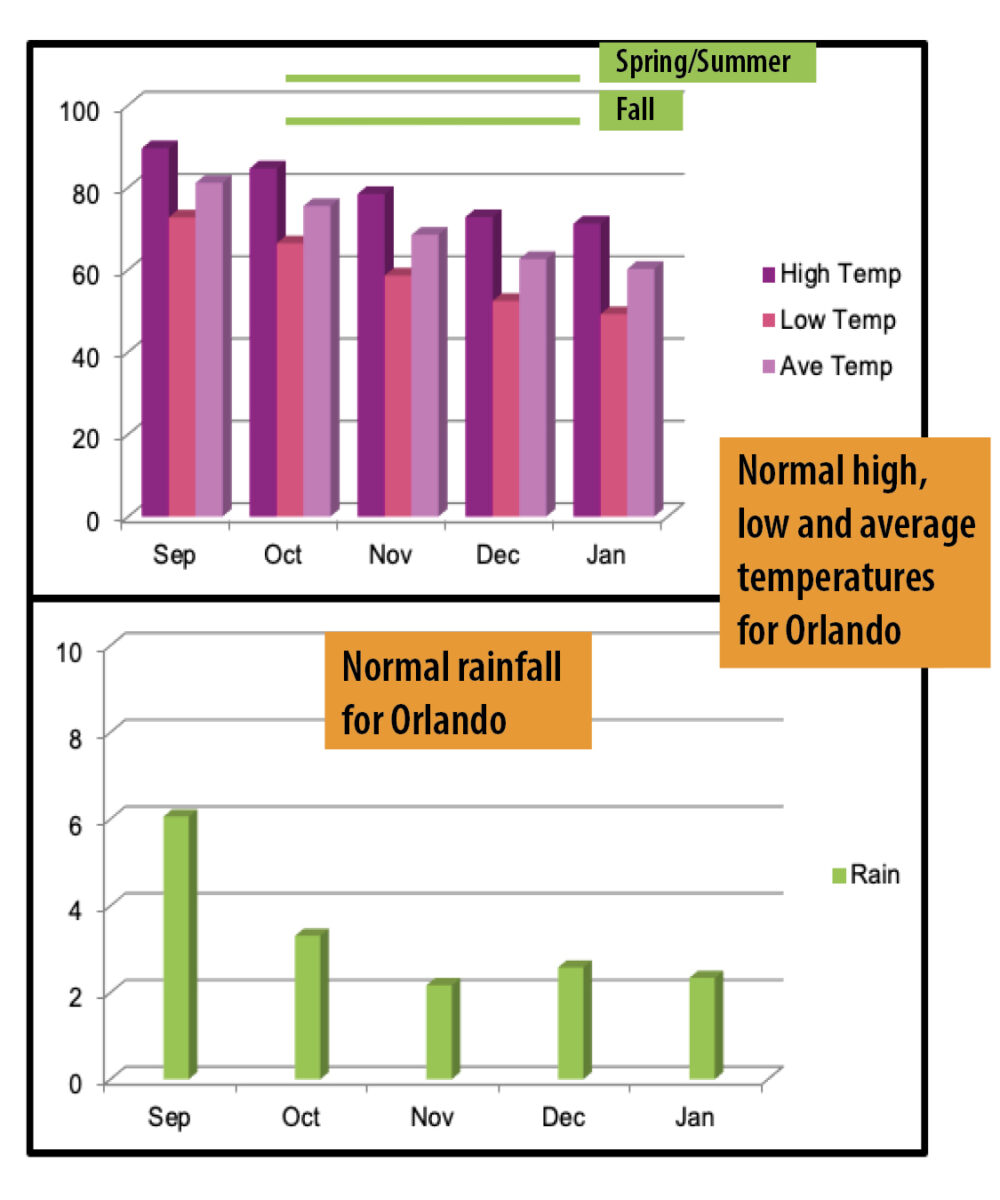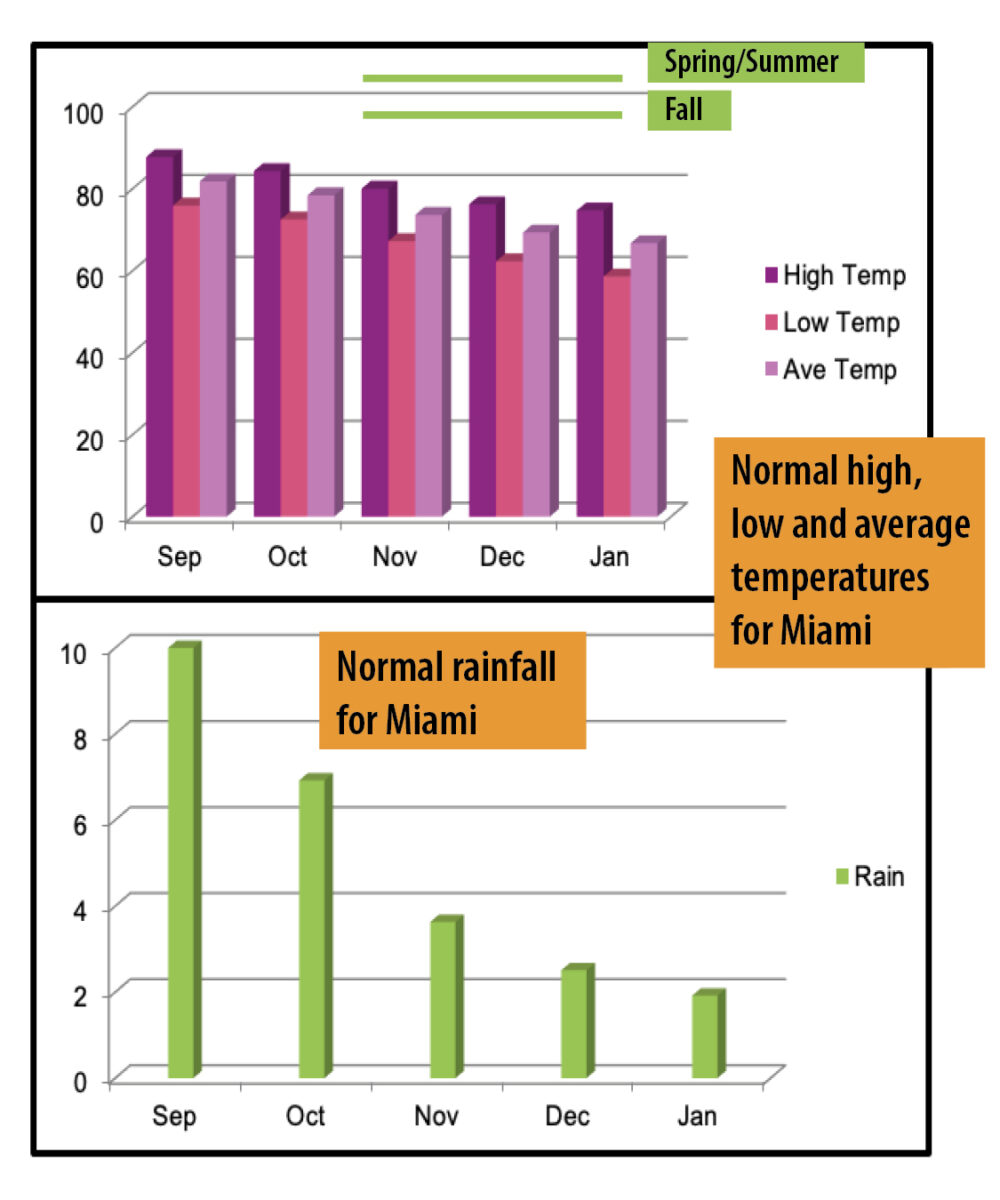Seeding Dates for Native Wildflowers and Grasses
Sowing seed at the appropriate time of year is one of the factors critical to successfully establishing a native wildflower/grass planting. Seed must be sown when germination, emergence and subsequent growth will occur quickly enough for wildflowers to fend off competing weed seedlings and for seedlings to tolerate adverse weather conditions.
The recommended sowing dates for North, Central and South Florida shown here are based on the estimated occurrences of the ideal combinations of soil temperatures and rain that are most likely to promote relatively quick germination, emergence, and seedling growth. This estimate also takes into consideration the ideal time during which wildflower seedlings have the best chance to out-compete weed seedlings and/or nonnative turf grasses.
When deciding on a sowing date, consider that Florida’s climate is a continuum from North to South Florida, which means the sowing date in your area may need to be adjusted accordingly. Keep in mind that generalizing seeding dates of Florida native wildflowers and grasses is challenging because weather can vary substantially from climatological norms
during late fall and winter.
Notes about factors affecting germination and emergence
Soil temperature Germination rates tend to progressively decrease as soil temperatures drop below the mid-60s or rise above the mid-90s. In the top 1/2 inch or so of soils, where seeds germinate, soil temperature is closely tied to air temperature. In addition, dark-colored soil tends to be warmer than light-colored soils. Moist soils will be cooler than dry soils during the day and warmer than dry soils at night. NOTE: Seeds of some species — for example, blazing stars (Liatris spp.) — require several weeks of cool, moist conditions before they will germinate.
Rain If supplying supplemental irrigation because of dry weather, provide at least 1/4 inch of water (3/8 to 1/2 inch in sandy soils) daily for two weeks. Use small droplets that will not drive seeds into soil. If seeds are too deeply embedded (1/2 inch or more), they might germinate but never emerge.
During late fall/early winter, the sowing season can be extended if rain is adequate and warm weather is predicted.If dry weather is predicted for late fall/early winter, the sowing season can be extended ONLY for naturally moist sites like swales. Elsewhere, sowing seed later than suggested might result in poor establishment.
Norcini, Jeffrey, 2020. Factsheet: Seeding Dates for Florida Native Wildflowers and Grasses. Florida Wildflower Foundation: Maitland, FL. September 2020. Print. Web. <https://www.flawildflowers.org/wp-content/resources/pdfs/Publications/SeedingDates.pdf>
Florida Wildflower Foundation ©2010; revised 2020. Contents may be shared, with attribution to FWF and Jeff Norcini, OecoHort, LLC. Thank you to Nancy Bissett, Dick Bush, Cammie Donaldson, Chris Grossenbacher, Brightman Logan, Will Moriaty, Hector Perez, Lisa Roberts and Terry Zinn for their thoughtful reviews and suggestions. For more information about Florida’s native wildflowers, visit www.FlaWildflowers.org.



